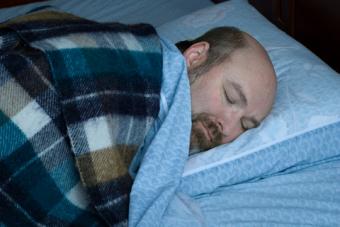
Restless leg syndrome is a neurological disorder that can interfere with sleep. Symptoms of RLS typically occur when the body is at rest, and symptoms are more common at night than during the day. Effective restless leg syndrome treatment can help improve sleep for the estimated 12 million Americans who currently suffer from RLS symptoms.
Primary Treatments for Restless Leg Syndrome
Because there is no specific diagnostic test for RLS, doctors make a diagnosis based on patient history and symptoms. Restless leg syndrome treatment focuses on correcting any underlying medical conditions and managing symptoms.
Lifestyle Changes
Changes in diet and lifestyle are typically the first method of treatment for mild to moderate restless leg syndrome. Identifying and eliminating triggers, such as caffeine or alcohol use, as well as changing sleep habits, can be effective for some people. Hot baths, leg massage, heating pads, and ice packs may all provide short-term relief. Choosing an aisle seat when you fly or go to a movie can allow you the room to stretch and move around.
Medications for RLS
Several medications may be useful in managing the symptoms of RLS, but many of these cause other side effects that make them unattractive to many patients.
- Dopaminergic medications are the treatment of choice for most doctors and patients. These medications, many of which are drugs for Parkinson's disease, include levodopa, carbidopa, pergolide mesylate, ropinirole hydrochloride, and pramipexole. Ropinirole and pramipexole are the only medications currently approved by the U.S. Food and Drug Administration to treat moderate to severe RLS symptoms.
- Benzodiazepines are beneficial for patients with mild to moderate, intermittent symptoms. The use of benzodiazepines, such as Valium and Klonopin, pose several risks when taken long-term. The medications may cause severe daytime sleepiness, and they can cause both physical and psychological addiction.
- Opioids, such as codeine, oxycodone, and propoxyphene, induce muscle relaxation and improve sleep, but these drugs pose many of the same risks as benzodiazepines. However, in cases of severe RLS, they may provide immediate relief from RLS symptoms while the patient waits for other medications or treatment options to take effect.
- Anticonvulsant medications, such as gabapentin and carbamazepine, help decrease sensory disturbance and improve symptoms for many people. The side effects of these medications may be severe, but they usually lessen or disappear with continued treatment.
Supplementation and Alternative Treatments
Vitamins for restless legs, as well as supplementation with magnesium, are showing promise as treatments for some RLS sufferers, and for people who have low levels of certain nutrients like iron, folate, or vitamin B, supplementation with these substances may help as well. Many patients report a decrease in symptoms following acupuncture treatments. Electrical nerve stimulation is another treatment option that may be useful against severe restless leg syndrome.
Exercises for RLS
In one randomized controlled trial, researchers found that people who did aerobics and resistance training several times a week had fewer RLS symptoms. In this study, the scientists did not make any participants stop taking any medications for RLS while in the study, so the impact of medications on symptoms is not clear. The following exercises offer a complementary approach to treating the condition that may lessen the patient's need for medication:
- Aerobics are naturally helpful in improving circulation and in reducing stress. People who have problems sleeping in general can benefit from engaging in moderate aerobic workouts on a regular basis. Aerobic programs that may be effective in treating RLS include walking, water aerobics, swimming, elliptical machines, and bicycling.
- Resistance training may be effective in treating the sleep disorder. Patients can try exercises with equipment like leg curls, horizontal leg presses, or leg extensions. Hip adduction and abduction can be done using resistance bands while you are in a seated position. There are also some exercises that don't require equipment like squats, lunges, calf raises, or donkey kicks that may be of benefit.
Some of the exercises can be dangerous if you do not use appropriate form and posturing. A trainer can help you to become familiar with using gym equipment correctly. Excessive or strenuous exercise can exacerbate the symptoms of RLS in some cases. Also exercising in excess can lead to nighttime muscle cramps that occur during sleep which can be quite painful and as disruptive as the RLS.
Outlook for RLS Sufferers
Restless leg syndrome may vanish on its own without treatment, or it may persist throughout life. RLS treatment helps ease symptoms and improve sleep, but not all treatments are effective for all people. What's more, many medications used to treat RLS may become less effective over time. Research is currently underway to uncover the cause of RLS and to develop better diagnostic tools and treatment options for RLS patients.







